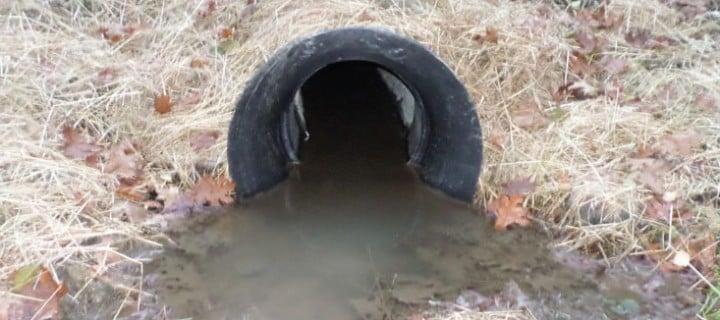Culvert Slip Lining In Augusta, Maine
- Home
- Team EJP Blog
- Culvert Slip Lining In Augusta, Maine
- Jan 9, 2014 9:00:00 AM
- Everett J. Prescott

Team PPF was contacted by Seth McGee, project manager for McGee Construction in Gardiner, ME. McGee Construction was working on a Maine DOT overlay project that included drainage and safety improvements on Route 3 in Augusta.
The plans and specifications of the project called for an existing 24" corrugated metal pipe (CMP) that crossed under Route 3 to be removed and replaced with 24" reinforced concrete pipe (RCP). Route 3 is a heavily trafficked corridor that starts in Augusta and heads east through Belfast, ending in the town of Mount Desert. In most circumstances, removing and replacing a 24" culvert is not a major project, but in this case the culvert at the center line of the road was 20'+ deep. For this culvert to be removed and replaced, there would have been substantial traffic impact, traffic delays, and engineering required to excavate over 20' deep.
Team PPF met with Seth at the project site to discuss what possible options there would be for slip lining with ISCO's Snap-Tite pipe. Whereas the existing culvert (host pipe) was 24", we had three options on what size liner pipe we could install: 18", 20", and 22". The 22" from a flow standpoint would be the best option; flow in the 22" HDPE Snap-Tite pipe would be an increase of 77 percent over the existing 24" CMP. The next best option would be the 20", where the flow would increase by 37 percent. There was concern of how straight the existing 24" CMP was laid. If it was not laid fairly straight, then the slip lining would not be an option and Seth would again be faced with removing and replacing.
Team PPF used their Pearpoint rover camera inspection system to inspect the existing culvert. Upon inspection, it was concluded that lining would be a feasible option, but there was a catch. The existing culvert was not laid extremely straight so it was determined that lining with 18" Snap-Tite pipe was the best solution. By downsizing the liner pipe, it gave us more space inside of the host pipe to line through the angle, and it actually increased the flow by 3 percent over the existing 24" CMP. The flow increase with the HDPE liner pipe contributed to the interior smooth wall design vs. the existing CMP, which is corrugated on the inside and out. With that said the flow is much better once the water gets in the pipe, but downsizing from 24" to 18" allows a smaller opening in the pipe for the water to get into. The solution for that was installing an 18" Hydro-Bell, also manufactured by ISCO industries, for exactly this circumstance. In early October, Team PPF worked with Seth and his crew to install the Snap-Tite culvert liner pipe, the Hydro-Bell, and grout for the annular space between the 24" and the 18" to prevent future settlement. Team PPF would like to thank Seth and everyone at McGee Construction for making this a successful project.








